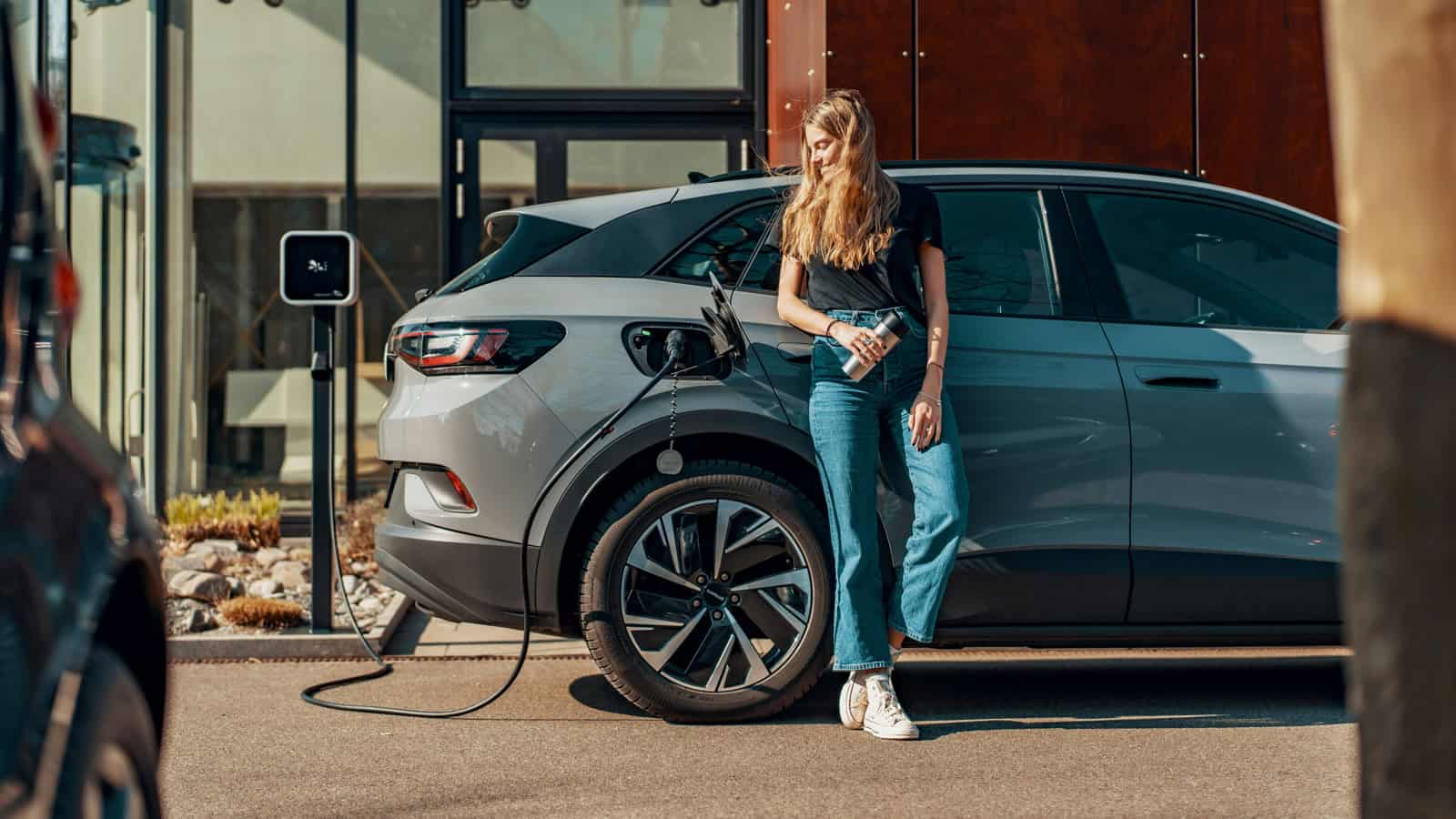- Ford CEO Jim Farley said a company “skunkworks” team has been working on a small, low-cost platform for producing Ford EVs.
- The revelation was discussed during a quarterly financial results call with Ford investors.
- Farley’s comments show Ford’s concern about Tesla’s planned $25K Model 2 and low-priced Chinese EVs.
On Feb. 6, 2024, Ford CEO Jim Farley said the company has been working on a small, low-cost platform for producing Ford EVs for the last two years. The “skunkworks” project was revealed during a quarterly financial results call with investors. The company is changing its electrification strategy, realizing its current crop of Ford EVs are too expensive for mass-market sales to take off. “All of our EV teams are ruthlessly focused on cost and efficiency in our EV products because the ultimate competition is going to be the affordable Tesla and the Chinese OEMs,” said Farley.
ADVERTISEMENT
A skunkworks project is an innovative, highly focused, small group of people that is outside the normal research and development (R&D) channels typically found within an organization. This particular project has put its focus on trying to develop a new Ford EV that costs less to create and thus would cost less for customers.
Farley said that Ford is focusing more on smaller EV cars. This is welcome news to EV adopters, as small, low-cost EVs have been noticeably missing from the EV industry, causing EV adoption growth to move slower than it could in the United States. In 2024, EV adoption is growing quickly, nonetheless, and is predicted to reach 10% in 2024, according to Cox Automotive.

High EV prices remain a significant barrier to adoption, making EV ownership unattainable for many. In a recent report, Kelley Blue Book stated that the average price for a new electric car was $50,798 in December 2023, down from $52,362 in November 2023. KBB’s report listed the average selling price for a new car, whether an EV or an internal combustion engine (ICE), as $48,759. Low-priced Ford EVs would have a good chance of selling as a competitor to Chevy’s Bolt, Tesla’s expected Model 2, and low-priced Chinese EVs.
Tesla’s 25K Model 2
Farley mentioned another competitor, the affordable Tesla, tentatively named the Model 2. Elon Musk shared in a December 2023 interview that the vehicle would sell for around $25,000, and Musk said he reviews Tesla Model 2 production plans every week. Tesla had hinted at the vehicle for several years but is only now getting serious about producing it. The company said production will begin in 2025.
ADVERTISEMENT
Low-Priced Chinese EVs Include BYD’s $11,400 Seagull
The Chinese OEMs that Farley mentioned are definitely a cause for concern for Ford, Tesla, and all other OEMs located outside of China. So far, China has yet to enter the American EV market in significant numbers. However, that may change. China’s low EV prices have many business leaders in the EV industry very worried.
Bill Russo, Founder and CEO of Automobility Limited, a Shanghai, China-based strategy and investment advisory firm, published some notable statistics about the Chinese auto industry in his “State of China’s Auto Market – January 2024” report.
Some key facts are clear in the report: that foreign dominance of the market is over, ICE sales are decreasing by wide margins, and domestically produced New Energy Vehicles (NEV) sales are increasing significantly both in the local Chinese market and in exports as well.
The report said, in part, “Compared with 2017, sales of domestically produced internal combustion engine-powered vehicles were down by a net 10.6 million units (a decline from 28.3 to 17.7). Factoring in an additional net decline of 400,000 imported cars, all of which are produced by global carmakers, the decline in ICE-powered vehicle sales totals 11 million units over this six-year period,” (the period is 2017-2023.)
The report continued, “Domestic sales of New Energy Vehicles (NEVs) increased by 7.5 million units (from 0.8 to 8.3), and Made-in-China exports increased by 3.8 million units (from 1.1 to 4.9). Local brand dominance of NEV sales in China, combined with the fact that local carmakers are the primary exporters, create a more complete representation of the bigger story: the loss of foreign brand dominance of the Chinese automotive market.”
A notable example of low prices in the Chinese EV market is BYD, a wildly successful Chinese automaker. The company has discovered a groundbreaking solution for manufacturing low-cost electric vehicles that offer global appeal. One of BYD’s latest models, the BYD Seagull, is a compact EV with a starting price of approximately $11,400. This is a price unheard of in America and Europe.
ADVERTISEMENT
Losses with Ford EVs
Ford’s losses in the EV market have some EV critics citing them as evidence that the EV industry is not profitable. Production for Ford EVs was split into a separate division called Model e, which declared a loss of $4.7 billion in 2023. That’s much higher than the $3 billion Ford thought Model e would lose in 2023.

Something the EV critics don’t realize is that EV profits don’t come overnight. Tesla famously bled cash for years as it scaled up production of its Model S, released in 2012. It was saved from the brink of bankruptcy by a $465M loan from the Department of Energy in 2010, and an infusion of cash from Daimler, acquiring an equity stake of 10%, also in 2010.
EV Charging Still Needed
If the manufacturer can stay the course and produce quality, small, attractive, and low-cost Ford electric cars that Americans will want to buy, it will succeed. However, in 2024, there are still barriers to EV adoption. The EV revolution is currently suffering from the “chicken and egg” syndrome, where mass adoption can’t happen until mass charging is available. The “egg” of a robust, nationwide charging network is now being laid thanks to federal funding, so the “chicken” of mass EV adoption can be born.
Early Majority Segment Buyers More Price Conscious

Automakers are struggling more now to sell EVs for another reason: The early adopters have already bought their electric vehicles. These mostly affluent, single-family homeowners tend to be more eco-conscious and were easy to sell EVs to, as they were highly motivated.
The more mainstream, early majority EV buyers now make up the buying segment. These buyers are much more price-conscious and less likely to be willing to contend with barriers. They want cheap; they want to go from point A to point B quickly with a minimum of fuss.
EVs are getting closer to those goals, but it will take time. In the meantime, the EV revolution continues to grow in spite of all these things.
Will Low-Priced Chinese EVs Enter the American Market?
We’ve discussed this before, but people are still wondering if and when Chinese EVs will officially enter the U.S. market. For now, they are still held back from the American market by several things, including significant trade barriers. Americans buy large amounts of other Chinese goods, including electronic devices and much more. Some experts point to the trade barriers as being necessary, as America’s OEMs can’t lower prices due to the higher, mostly union, wages paid to their workers. Chinese wages are much lower, offering significant cost savings to Chinese OEMs.
Foreign relations between China and the U.S. are still strained, so it doesn’t seem that Jim Farley needs to be really worried yet about trying to sell a cheaper Ford electric car. But things could change, and it’s better for Ford to be prepared for a Chinese expansion into the American EV market than not prepared.
ADVERTISEMENT

SOURCE | IMAGES: FORD
FTC: We use income-earning auto affiliate links. Learn more.

































One Response